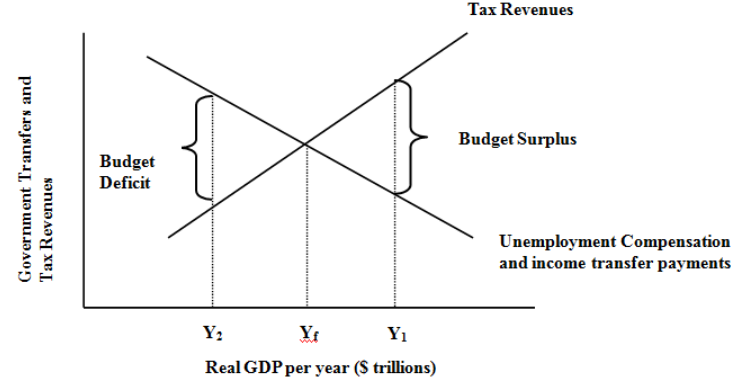The tax revenues of the public authority are by and large equivalent to the joblessness pay and other exchange instalments of the public authority at the real GDP of . Thusly, the national government When the real GDP of the economy falls underneath business falls.

Simultaneously, charge assortments fall as fewer individuals are utilized. Thus, government spending ascends from one viewpoint and duty assortments decline, on the other. Consequently, the public authority, whose financial plan was adjusted at , presently runs a financial plan deficit.



